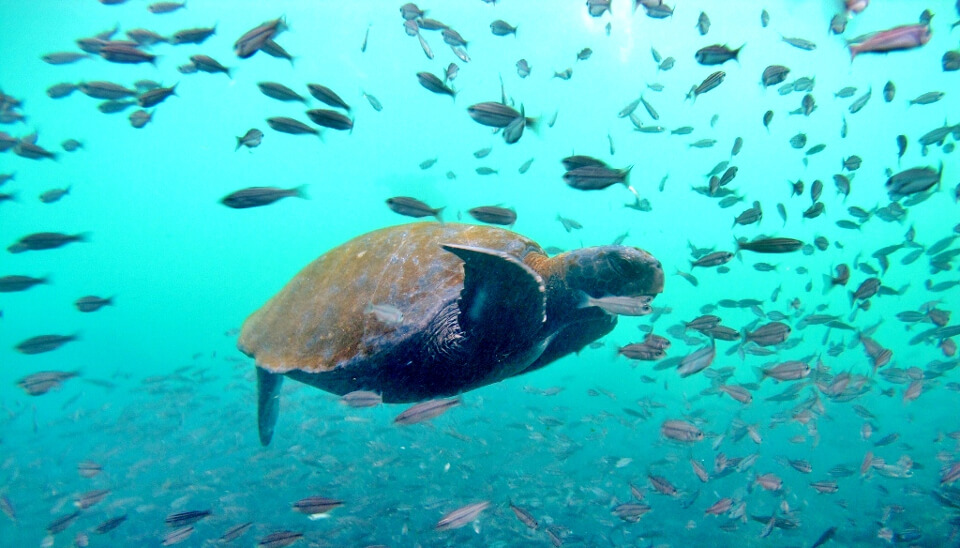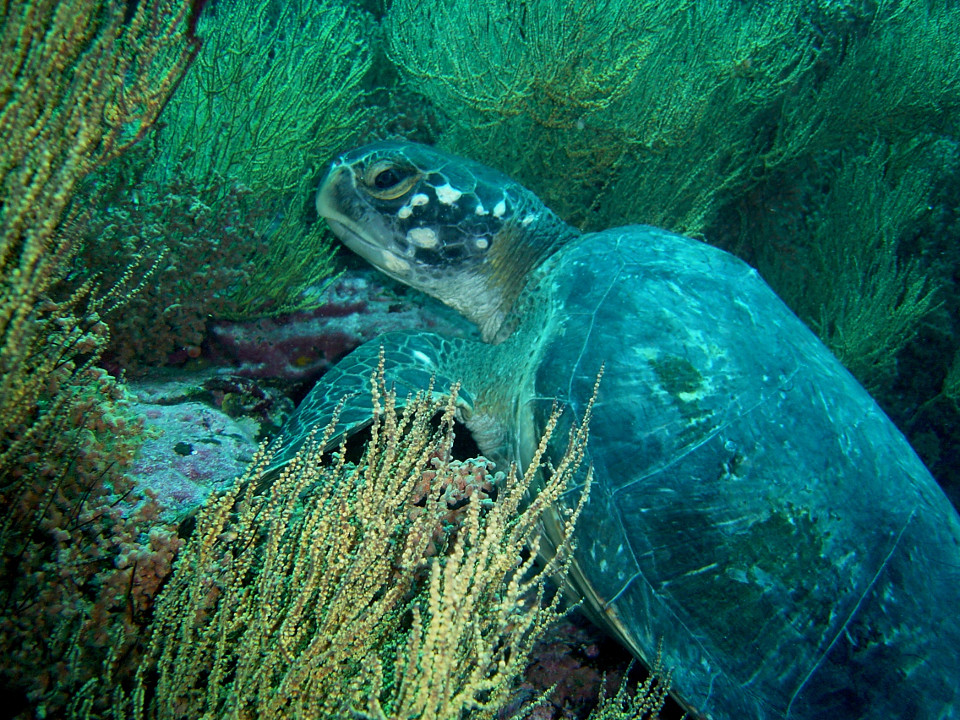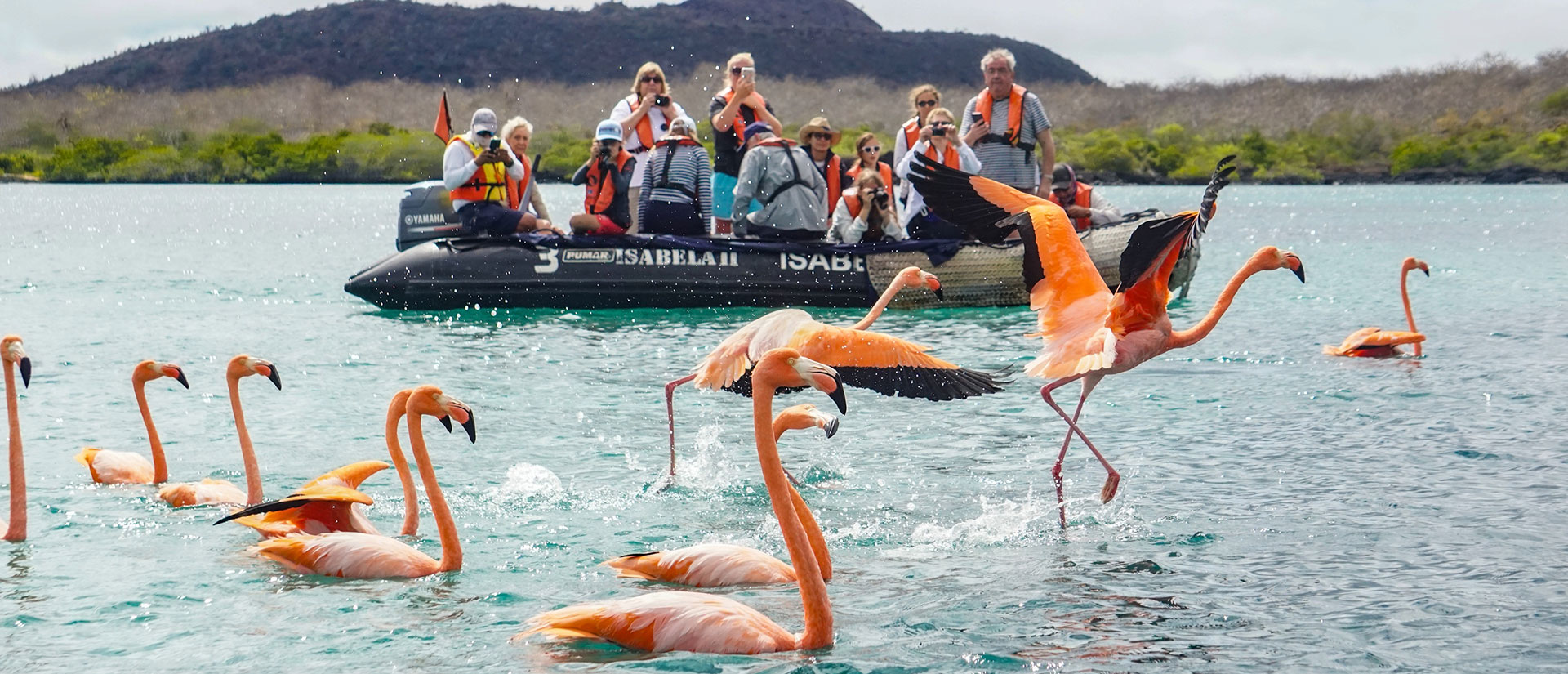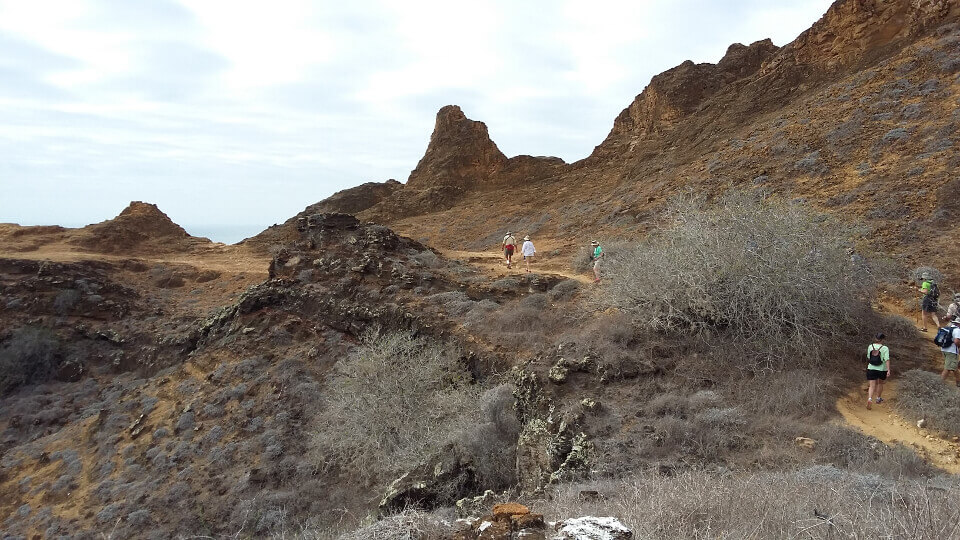
Swimmers and divers often find themselves accompanied by Galapagos green sea turtles. They exude calmness by their serene demeanor and serene swimming style, perfectly in sync with the currents of the surrounding ocean. While it’s not uncommon to encounter sea turtles in the Galapagos Islands, it is uncommon to witness their nesting process or the hatching of their eggs. Hopefully, your Galapagos cruise will take place on this wonderful occasion. It is really during the month of May when young Galapagos green turtles migrate from their comfortable sand nests to the open ocean.
Turtle hatchlings are what I want to see!
After 45 to 70 days, the young green sea turtles of the Galapagos start to hatch. They crack open their shells with the aid of a tiny, temporary tooth that is situated on their nose. However, hatchlings do not immediately depart from their nests. Instead, they stay in the nests for a few days while using an umbilical chord to ingest the egg yolk. This will help them on their very first voyage, from the nest to the water, and serve as their initial energy source. Hatchlings will exit their nests at night to avoid predators, much like their mothers do in the opposite situation. They can see the water’s reflection much more clearly thanks to the night sky’s role as a guide. In an instant, young sea turtles will dive into the water and swim for about twenty-four hours, attempting to reach the furthest distance from the coast. For many years to come, they won’t go near the coast.
If they make it to the ocean, young green sea turtles will progressively start to consume a variety of foods, such as seaweed, jellyfish, fish eggs, and even mollusks and crustaceans. Regretfully, due to their voracious eating, they can inadvertently swallow trash and detritus.

Sea turtle spotted in the Galapagos Marine Reserve
Sea turtles may even start eating the Galapagos red mangrove’s leaves and bark as they become older. Around the shores of islands, where seaweed is typically abundant, elderly sea turtles are frequently seen hunting for the plant.
Sea turtles often grow at relatively sluggish rates. Sea turtles that are younger (approximately 40–50 cm long) grow by 1 centimeter year. Beyond that size, the growth rate of any sea turtle is around 0.3 cm annually. When the sea turtle approaches sexual maturity, its growth rate decreases.
A mother green sea turtle from the Galapagos Islands may deposit 50–200 eggs in three hours or less. Only female sea turtles come ashore to go through this procedure. They must, however, locate a sandy beach in order to accomplish this, which can be challenging in the Galapagos due to the region’s predominately volcanic landscape. She gently deposits her eggs and then seals the opening with sand. Predators have been reported to be tricked by certain female Galapagos green sea turtles by building a fake nest adjacent to the actual one. Additionally, they attempt to hide any evidence of their existence by covering the nest’s surroundings with sand. Finally, to avoid being preyed upon during the day, nesting only takes place at night. Before coming ashore to deposit their eggs, female Galapagos green sea turtles exercise considerable caution; if they sense danger, they will remain in the water until the beach is secure.

Visita Isabela Island on the Isabela II. A sea turtle spotted on Punta Vicente Roca. Photo credit: Francisco Dousdebes




